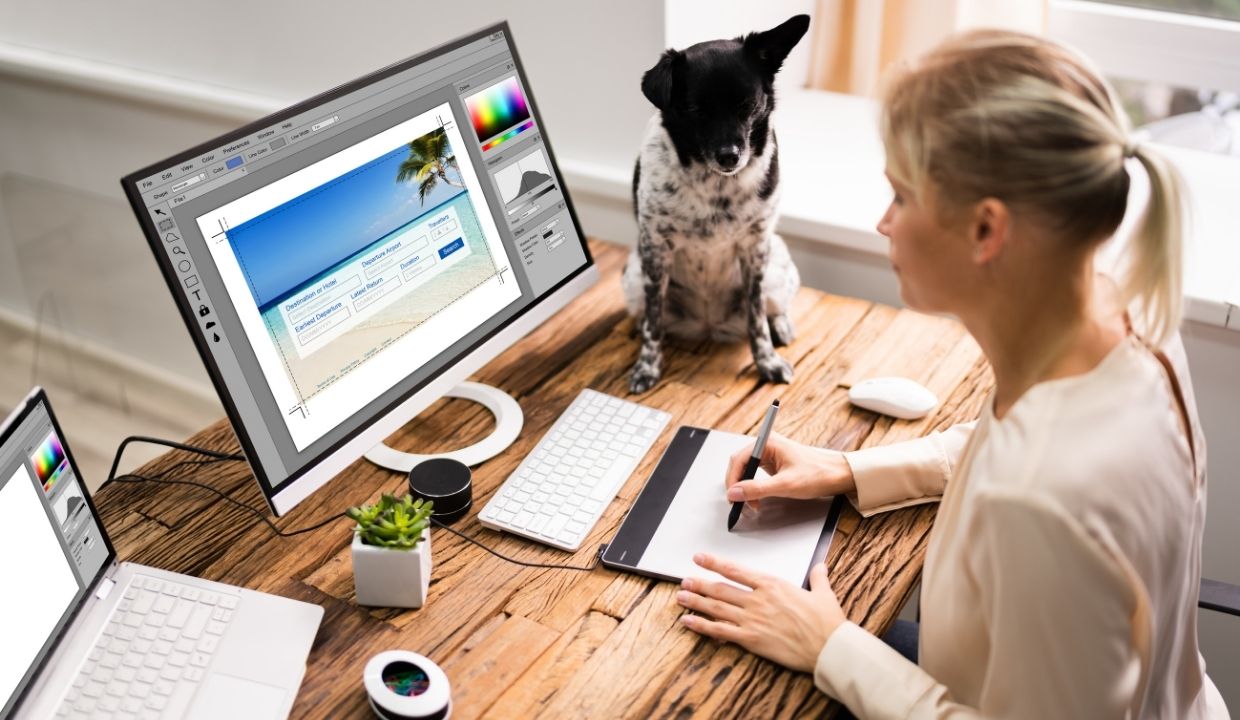In today’s digital age, where attention spans are shrinking, and competition for audience engagement is fierce, visual impact plays a crucial role in capturing and retaining the attention of your audience. One powerful tool in a designer’s arsenal is the creative use of background design. This article explores various techniques to create visually captivating backgrounds that enhance the overall appeal of your designs.
Understanding the Psychology of Colors
The Emotional Impact of Colors
Colors evoke emotions and influence moods. Understanding the psychology of colors is vital in creating backgrounds that resonate with your audience. For instance, warm colors like red and orange can evoke excitement and passion, while cooler tones like blue and green induce calmness and tranquility.
Choosing the Right Background Images
High-Quality Imagery
Using high-quality images as background can significantly impact the visual appeal of your design. Blurry or pixelated images can make your design look unprofessional and unappealing. Invest in premium stock images or hire a photographer to capture captivating visuals.
Relevant Images
The background images should align with the overall message and theme of your design. Irrelevant or confusing imagery can distract the audience and dilute the impact of your message.
Typography Considerations
Typography is a critical aspect of design that involves the art and technique of arranging type to make written language readable and visually appealing. When it comes to creating effective visual impact through typography, several key considerations must be taken into account.
To illustrate these considerations better, let’s explore them in a table format:
|
Consideration |
Description |
Importance |
|
1. Contrast |
The contrast between the font color and the background |
High |
|
|
is essential for readability and visual hierarchy. |
|
|
2. Font Selection |
Choosing the right typeface that aligns with the |
Very High |
|
|
overall design theme and message. |
|
|
3. Font Size |
Determining the appropriate font size for different |
High |
|
|
elements to ensure readability across various devices. |
|
Let’s delve into each consideration in more detail:
1. Contrast
One of the primary considerations in typography is the contrast between the font color and the background. High contrast ensures that the text stands out and is easily readable, even at a glance. It is crucial to choose colors that complement each other well and avoid combinations that strain the eyes or make the text difficult to decipher. For example, using white text on a black background or vice versa can create a strong contrast and enhance readability.
2. Font Selection
The choice of typeface significantly impacts the overall look and feel of the design. Different typefaces convey different emotions and styles, so it’s essential to select a font that aligns with the design’s theme and message. For formal or professional designs, clean and simple sans-serif fonts may be more appropriate, while creative and artistic designs might benefit from decorative or handwritten typefaces.
3. Font Size
Determining the right font size is crucial for ensuring that the text is legible across various devices and screen sizes. A font that is too small can be challenging to read, while a font that is too large may appear overpowering and disrupt the visual balance of the design. It’s essential to find a balance between readability and aesthetics, considering the target audience and the platform where the design will be displayed.
In conclusion, typography considerations play a vital role in creating effective visual impact in design. The right contrast, font selection, and font size can greatly enhance the readability and aesthetics of the design, making it more engaging and impactful for the audience.
Layering and Depth
Parallax Effect
Creating a parallax effect by layering multiple elements in the background can add a sense of depth and interactivity to your design. The subtle movement as the user scrolls can create an engaging and immersive experience.
Overlays and Translucency
Using overlays and translucent elements on the background can add a touch of elegance and sophistication to your design. It can also help in harmonizing different design elements.
Visual Hierarchy
Focal Points
A well-designed background should have a clear focal point that directs the audience’s attention to the most critical elements of the design. This could be achieved through color contrast, size variations, or placement.
Supporting the Main Content
The background should not overpower the main content but rather enhance and support it. Striking the right balance between background and foreground elements is essential.
Animation and Motion
Cinemagraphs
Cinemagraphs are still images with subtle, repeated animations that create an eye-catching effect. Integrating cinemagraphs into your background can make your design more dynamic and attention-grabbing.
Video Backgrounds
Integrating videos as backgrounds can be a powerful storytelling tool. However, ensure that the video is short, relevant, and does not overshadow the main content.
Incorporating Brand Identity
Consistent Branding
Use the background design to reinforce your brand identity. Incorporate brand colors and elements that resonate with your brand’s personality.
Custom Illustrations
Consider creating custom illustrations or graphics as backgrounds that align with your brand’s uniqueness and message.
In conclusion, mastering the art of creative background design can elevate the visual impact of your designs to new heights. Understanding the psychology of colors, choosing the right background images, typography considerations, layering, visual hierarchy, animation, and incorporating brand identity are all vital elements to create backgrounds that captivate your audience and leave a lasting impression.
FAQs
- Why is background design important in visual communication?
- Background design sets the tone, mood, and visual appeal of a design. It enhances the overall message and can significantly impact the audience’s perception.
- Can I use any image as a background for my design?
- It is essential to use high-quality and relevant images that align with your design’s theme and message. Avoid using copyrighted images without permission.
- How can animation in the background benefit my design?
- Subtle animations like cinemagraphs can make your design more engaging and interactive, keeping the audience’s attention longer.
- Should the background design be consistent across all platforms?
- Maintaining consistent branding, including background design, is crucial for establishing a strong brand identity and recognition.
- What are some tools to create custom illustrations for background designs?
- There are various graphic design tools like Adobe Illustrator, Sketch, and CorelDRAW that can help you create custom illustrations for your background designs.




Leave a Reply